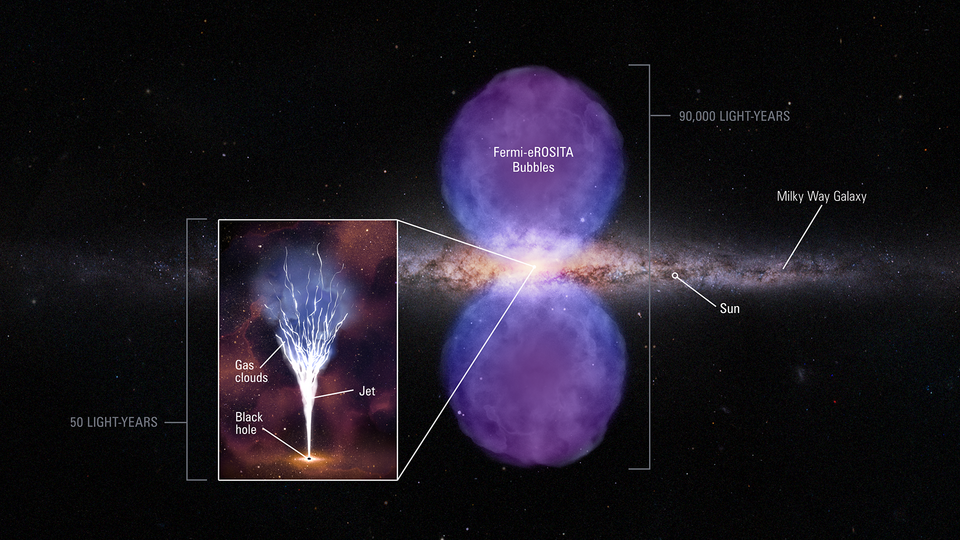Discovery of Cold Hydrogen Clouds in Milky Way's Fermi Bubbles

In a groundbreaking revelation, a team of astronomers has uncovered cold hydrogen clouds embedded within the Fermi bubbles of the Milky Way, challenging existing theories about these enigmatic structures. The research, published in the Astrophysical Journal Letters, indicates that these clouds may be only a few million years old, suggesting a recent and violent outburst in our galaxy's history.
The Fermi bubbles, first identified in 2010 by NASA's Fermi Gamma-ray Space Telescope, are gigantic lobes of high-energy radiation that extend approximately 25,000 light-years above and below the Milky Way's galactic plane. Comprised of gamma rays and high-energy cosmic rays, their formation is believed to have resulted from a cataclysmic event akin to a volcanic eruption on a galactic scale, according to Rongmon Bordoloi, an associate professor of physics at North Carolina State University and co-author of the study.
Using the National Science Foundation's Green Bank Telescope in West Virginia, the team discovered that, amid the hot gas typically found in the Fermi bubbles, there exist clouds of neutral hydrogen gas situated about 12,000 light-years above the galactic center. Strikingly, these clouds have a temperature of around 10,000 degrees Kelvin, significantly cooler than their surrounding environment, which reaches nearly 1 million degrees Kelvin. This juxtaposition has led to the metaphorical description of the clouds as 'ice cubes in a volcano,' an analogy provided by Andrew Fox, an astronomer at the Space Telescope Science Institute and another coauthor of the paper.
The research team posits that these hydrogen clouds may have been captured from the galactic center and transported by the hot winds generated by the Fermi bubbles. Jay Lockman, an astronomer at the Green Bank Observatory and coauthor, explained that just as clouds on Earth can indicate the movement of wind, these cold clouds can provide insight into the dynamics of the hot winds from the Milky Way.
The implications of this discovery extend beyond mere cosmic curiosity. Understanding the Fermi bubbles and their associated cold clouds could enhance our comprehension of galactic evolution and the processes that shape our universe. The current findings challenge previous assumptions about the age and stability of the Fermi bubbles, suggesting they are much younger than previously believed, with critical impacts on theories regarding galactic formation and activity.
The study enriches the dialogue surrounding the Fermi bubbles, which have been the subject of various competing theories regarding their origin. Moving forward, further research is essential to unravel the mysteries surrounding these structures and their role in the cosmic landscape.
In summary, the discovery of cold hydrogen clouds within the Fermi bubbles not only adds a layer of complexity to our understanding of the Milky Way but also invites astronomers to reconsider existing models of galaxy evolution—a testament to the ever-evolving nature of cosmic research.
Advertisement
Tags
Advertisement





